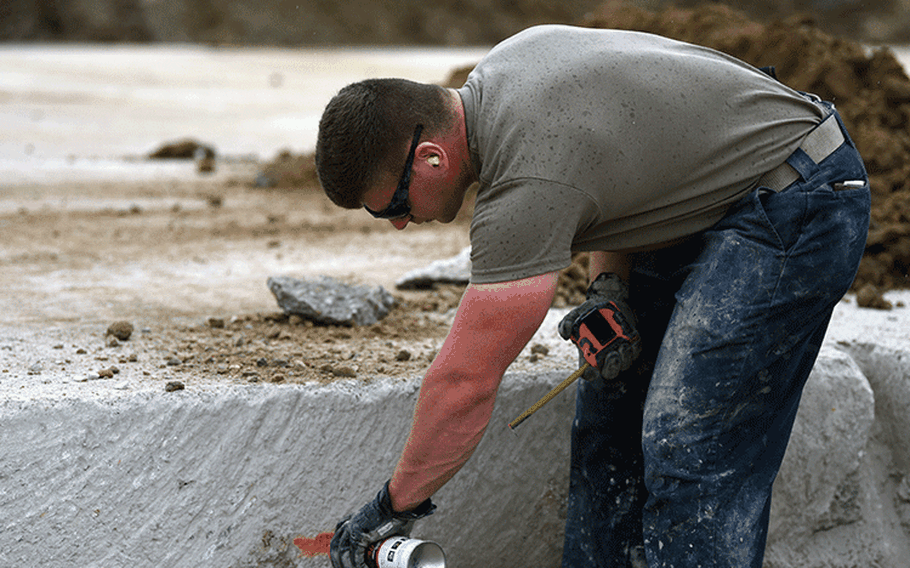Community News
51st CES conducts RADR training
51st Fighter Wing Public Affairs September 18, 2019

Senior Airman Christopher Brown, 51st Civil Engineering Squadron heavy equipment operator, marks inside a simulated crater during the 51st CES’ biannual rapid airfield damage repair training on Osan Air Base, Republic of Korea, September 12, 2019. When repairing a damaged airfield, there are two layers of concrete that need to be leveled and set in order for the airfield to be back to mission ready. (U.S. Air Force photo by Senior Airman Denise M. Jenson) ()
OSAN AIR BASE, Republic of Korea -- Generally, at the center of Air Force installation operations is the airfield and the runway, heavily guarded by law enforcement and surveillance to keep people and assets safe.
Which leaves the question: what would happen if Osan Air Base’s runway was somehow left damaged?
It is the responsibility of the 51st Civil Engineer Squadron to make accurate and timely repairs. In preparation for similar scenarios, the squadron held their biannual rapid airfield damage recovery training Sept. 9-13, 2019.
“This training is designed to demonstrate our ability to rapidly repair our airfield after it’s been damaged,” said Tech. Sgt. David Rodgers, 51st CES pavements and equipment craftsman.
On a normal working day, the 51st CES’ “Dirt Boyz”, or heavy equipment operators, are the only ones that work with machinery like front loaders and excavators. But when the time comes for RADR training, every Airman in the squadron is trained on multiple pieces of heavy machinery.
“The training is good for us because it’s CE putting it on for CE,” said Senior Airman Brandon Beltran, 51st CES heating, ventilation and air conditioning technician. “Each one of our individual crafts are assigned a specific piece of equipment and if anything were to happen to the runway, the goal is to jump into any piece of equipment and know how to use it to get the job done.”
When an airfield is damaged, these Airmen are able to get the airfield functional again in under eight hours by conducting field assessments, gathering their necessary equipment and venturing out to repair the damage caused to ensure mission readiness once again.
“Generally, in a real world scenario, our engineering assistants would do damage assessment of the airfield,” Rodgers said. “Once everyone has done their necessary checks, we gather our equipment and head out and start working on the repairs.”
In addition to their own individual training, members of the 554th Rapid Engineer Deployable Heavy Operational Repair Squadron assigned to Andersen Air Force Base, Guam, were also there to instruct members throughout the training and provide feedback on how to improve the process.
“We bring instructors out to ensure our proficiency while training with equipment and material that isn’t used every day,” said Maj. Branden DeLong, 51st CES operations flight commander. “The mission is always our first priority, but it’s also an opportunity to get time in some great equipment. [This training] creates an environment where everyone wants to get the job done and showcases Osan’s abilities to bring the airfield back to operational as quickly as possible”.